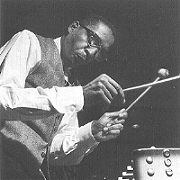
 Milt
“Bags” Jackson
died in Manhattan of liver cancer at the age of 76.
Jackson is best known as one-fourth of the Modern
Jazz Quartet, which performed its unique and
impeccable “chamber jazz” from 1952 until its
dissolution in 1974, with only one change in
personnel—drummer Connie Kay replacing Kenny Clarke
in 1955. Jackson's death leaves pianist-musical
director John Lewis and bassist Percy Heath as the
MJQ's survivors. Jackson was born on New Years
Day, 1923, in Detroit. Growing up, he sang and
played a variety of instruments, including drums and
piano (on which he recorded several times) before
settling on a relatively new instrument, the
vibraphone, a somewhat unusual choice given that he
had perfect pitch. In 1945, Dizzy Gillespie heard
Jackson playing the vibraphone in a Detroit bar and
immediately hired him for Gillespie's ill-fated
first attempt at a big band. After the band
collapsed, Jackson joined Gillespie and Charlie
Parker in a sextet for what became a legendary
two-month engagement at Billy Berg's in Hollywood.
Recordings from this period demonstrate that Jackson
had not yet fully developed the modern style, but
working night after night in a combo with the two
great geniuses of the new music obviously had a
profound influence. (("Bags"
was his nickname, from the 'bags' under his eyes
from staying up late - or more likely cigarette
smoke)
Milt
“Bags” Jackson
died in Manhattan of liver cancer at the age of 76.
Jackson is best known as one-fourth of the Modern
Jazz Quartet, which performed its unique and
impeccable “chamber jazz” from 1952 until its
dissolution in 1974, with only one change in
personnel—drummer Connie Kay replacing Kenny Clarke
in 1955. Jackson's death leaves pianist-musical
director John Lewis and bassist Percy Heath as the
MJQ's survivors. Jackson was born on New Years
Day, 1923, in Detroit. Growing up, he sang and
played a variety of instruments, including drums and
piano (on which he recorded several times) before
settling on a relatively new instrument, the
vibraphone, a somewhat unusual choice given that he
had perfect pitch. In 1945, Dizzy Gillespie heard
Jackson playing the vibraphone in a Detroit bar and
immediately hired him for Gillespie's ill-fated
first attempt at a big band. After the band
collapsed, Jackson joined Gillespie and Charlie
Parker in a sextet for what became a legendary
two-month engagement at Billy Berg's in Hollywood.
Recordings from this period demonstrate that Jackson
had not yet fully developed the modern style, but
working night after night in a combo with the two
great geniuses of the new music obviously had a
profound influence. (("Bags"
was his nickname, from the 'bags' under his eyes
from staying up late - or more likely cigarette
smoke)
 Gary Burton
Born in 1943 and
raised in Indiana, Gary Burton taught himself to play the vibraphone
and, at the age of 17, made his recording debut in Nashville, Tennessee,
with guitarists Hank Garland and Chet Atkins. Two years later, Burton
left his studies at Berklee College of Music to join George Shearing and
subsequently Stan Getz, with whom he worked from 1964-1966.
Also in the
'70s, Burton began his career with
Berklee College of Music in Boston.
Burton began as a teacher of percussion and improvisation classes at
Berklee in 1971. In 1985 he was named Dean of Curriculum. In 1989, he
received an honorary doctorate of music from the college, and in 1996,
he was appointed Executive Vice President. Burton began
recording for GRP records in the '80s and '90s. In 1990, he paired up
again with his former protege Metheny for Reunion, which landed him the
top spot on Billboard magazine's jazz chart. Burton is now recording for
Concord Records.
Departure (Gary Burton & Friends) was released in 1997 by Concord
Records as well as Native Sense, a new duet collaboration with
Chick Corea, which garnered a Grammy Award in 1998. Also in 1997, Burton
recorded his second collection of tango music, Astor Piazzolla Reunion,
featuring the top tango musicians of Argentina, followed by Libertango
in 2000, another collection of Piazzolla music. His 1998 Concord
release, Like Minds, an all-star hit featuring his frequent
collaborators Chick Corea, Pat Metheny, Roy Haynes, and Dave Holland,
was honoured with a Grammy win, Burton's fifth. Gary's vibraphone
tribute CD, For Hamp, Red, Bags and Cal, was released in March 2001 on
Concord and garnered Gary's 12th Grammy nomination. His most recent
release in 2002 is a unique project with Makoto Ozone, his pianist
collaborator of the past twenty years. In Virtuosi the pair explore the
improvisational possibilities of classical themes including works by
Brahms, Scarlatti, Ravel, Barber and others. In an unusual move, the
Recording Academy nominated Virtuosi in the classical category of the
Grammy awards, a unique honour for Gary.
Gary Burton
Born in 1943 and
raised in Indiana, Gary Burton taught himself to play the vibraphone
and, at the age of 17, made his recording debut in Nashville, Tennessee,
with guitarists Hank Garland and Chet Atkins. Two years later, Burton
left his studies at Berklee College of Music to join George Shearing and
subsequently Stan Getz, with whom he worked from 1964-1966.
Also in the
'70s, Burton began his career with
Berklee College of Music in Boston.
Burton began as a teacher of percussion and improvisation classes at
Berklee in 1971. In 1985 he was named Dean of Curriculum. In 1989, he
received an honorary doctorate of music from the college, and in 1996,
he was appointed Executive Vice President. Burton began
recording for GRP records in the '80s and '90s. In 1990, he paired up
again with his former protege Metheny for Reunion, which landed him the
top spot on Billboard magazine's jazz chart. Burton is now recording for
Concord Records.
Departure (Gary Burton & Friends) was released in 1997 by Concord
Records as well as Native Sense, a new duet collaboration with
Chick Corea, which garnered a Grammy Award in 1998. Also in 1997, Burton
recorded his second collection of tango music, Astor Piazzolla Reunion,
featuring the top tango musicians of Argentina, followed by Libertango
in 2000, another collection of Piazzolla music. His 1998 Concord
release, Like Minds, an all-star hit featuring his frequent
collaborators Chick Corea, Pat Metheny, Roy Haynes, and Dave Holland,
was honoured with a Grammy win, Burton's fifth. Gary's vibraphone
tribute CD, For Hamp, Red, Bags and Cal, was released in March 2001 on
Concord and garnered Gary's 12th Grammy nomination. His most recent
release in 2002 is a unique project with Makoto Ozone, his pianist
collaborator of the past twenty years. In Virtuosi the pair explore the
improvisational possibilities of classical themes including works by
Brahms, Scarlatti, Ravel, Barber and others. In an unusual move, the
Recording Academy nominated Virtuosi in the classical category of the
Grammy awards, a unique honour for Gary.
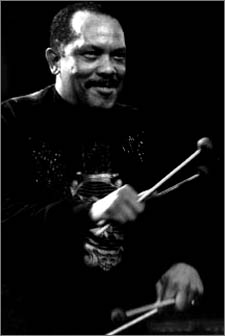 Roy
Ayers
- A
popular jazz vibraphonist and vocalist, Ayers reached the peak of his
commercial popularity during the mid-70s and early 80s. He was also
justly celebrated as an important influence on the latter decade's
acid-jazz movement. Ayers played piano as a child and took an interest
in the vibes after meeting Lionel Hampton. In high school he formed his
first group, the Latin Lyrics, and in the early 60s began working
professionally with flautist/saxophonist Curtis Amy. Ayers' first album
under his own name was West Coast Vibes on United Artists Records, a
1963 recording session which featured Amy. He also worked with Chico
Hamilton, Hampton Hawes and Herbie Mann, with whom he first gained
prominence between 1966 and 1970. After recording three albums for
Atlantic Records in the late 60s, Ayers formed Roy Ayers Ubiquity and
signed to Polydor Records, incorporating funk and R&B styles into his
jazz. Using a number of prominent sidemen such as Herbie Hancock, Ron
Carter, Sonny Fortune, George Benson and Billy Cobham, Ubiquity's albums
helped to popularize the jazz/funk crossover style. The group reached
the R&B charts with several albums and singles during this period,
including the Top 20 disco-influenced R&B hit "Running Away". The album
track "Everybody Loves The Sunshine" remains a perennial club favourite
into the new millennium. Ayers dropped the Ubiquity group name in 1978
and continued to have chart success with both his solo albums and
singles into the late 80s. After touring Africa, Ayers recorded Africa,
Center Of The World with Fela Kuti and also set up the Uno Melodic
Records label with the Nigerian musician. He switched to Columbia
Records in 1984 but released records less frequently as the 80s came to
a close, concentrating on composing and producing for other artists.
Since the late 80s, Ayers and the resurrected Ubiquity have enjoyed a
successful collaboration with Ronnie Scott's jazz club in Soho, London,
acting as the official house band. In 1993, Ayers guested on the first
instalment of Guru's Jazzmatazz project, a self-styled "experimental
fusion of hip-hop and jazz". Two years later Ayers secured a contract
with RCA Records and the Groovetown label, for whom he recorded the
well-received Nasté. He has subsequently appeared on albums by Masters
At Work (the Nuyorican Soul project), Erykah Badu and Eric Benét, and
re-established his own record label under the name AFI
CDs.
Roy
Ayers
- A
popular jazz vibraphonist and vocalist, Ayers reached the peak of his
commercial popularity during the mid-70s and early 80s. He was also
justly celebrated as an important influence on the latter decade's
acid-jazz movement. Ayers played piano as a child and took an interest
in the vibes after meeting Lionel Hampton. In high school he formed his
first group, the Latin Lyrics, and in the early 60s began working
professionally with flautist/saxophonist Curtis Amy. Ayers' first album
under his own name was West Coast Vibes on United Artists Records, a
1963 recording session which featured Amy. He also worked with Chico
Hamilton, Hampton Hawes and Herbie Mann, with whom he first gained
prominence between 1966 and 1970. After recording three albums for
Atlantic Records in the late 60s, Ayers formed Roy Ayers Ubiquity and
signed to Polydor Records, incorporating funk and R&B styles into his
jazz. Using a number of prominent sidemen such as Herbie Hancock, Ron
Carter, Sonny Fortune, George Benson and Billy Cobham, Ubiquity's albums
helped to popularize the jazz/funk crossover style. The group reached
the R&B charts with several albums and singles during this period,
including the Top 20 disco-influenced R&B hit "Running Away". The album
track "Everybody Loves The Sunshine" remains a perennial club favourite
into the new millennium. Ayers dropped the Ubiquity group name in 1978
and continued to have chart success with both his solo albums and
singles into the late 80s. After touring Africa, Ayers recorded Africa,
Center Of The World with Fela Kuti and also set up the Uno Melodic
Records label with the Nigerian musician. He switched to Columbia
Records in 1984 but released records less frequently as the 80s came to
a close, concentrating on composing and producing for other artists.
Since the late 80s, Ayers and the resurrected Ubiquity have enjoyed a
successful collaboration with Ronnie Scott's jazz club in Soho, London,
acting as the official house band. In 1993, Ayers guested on the first
instalment of Guru's Jazzmatazz project, a self-styled "experimental
fusion of hip-hop and jazz". Two years later Ayers secured a contract
with RCA Records and the Groovetown label, for whom he recorded the
well-received Nasté. He has subsequently appeared on albums by Masters
At Work (the Nuyorican Soul project), Erykah Badu and Eric Benét, and
re-established his own record label under the name AFI
CDs.
Marjorie Hyams - Vibraphonist
If Margie Hyams had not retired prematurely, she
would be much better-known today. A talented vibraphonist able to play
in both bop and swing settings, Hyams was an important musician during
the second half of the 1940's. She was featured with Woody Herman's
First Herd (1944-45), led her own trio (1945-48) and was an original
member of the George Shearing
Quintet
(1949-50). In addition, she recorded with
Flip Phillips,
Mary Lou Williams
and Charlie Ventura.
However in 1950 Margie Hyams (who never led her own recording session)
married and decided to retire from music at the age of 27. Little has
been heard from her since, a major loss to jazz.
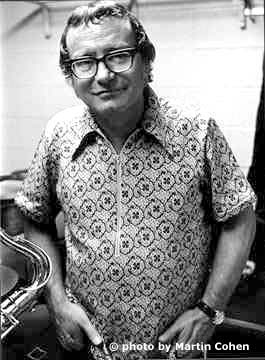
While with Brubeck, Tjader signed with Dave's label, Fantasy, but it was not until he left Shearing in 1954 that he began recording in earnet. Over the next seven years, Fantasy released an amazing string of 30 albums, over half of them featuring Latin music. To some extent, Fantasy was trying to capitalize on the mambo craze of the mid-1950s, and, in hindsight, the Latin albums tended to cause some listeners (including this writer) to overlook his straight-ahead jazz albums. Worth particular note among these are the two "Brubeck/Tjader" albums and "San Francisco Moods," which featured a number of Tjader originals and remains one of the most listenable albums from the West Coast jazz era.
Tjader's mid-1950s quintet rode the wave of the popularity of West Coast jazz, giving pianist Vince Guaraldi, among others, major career boosts. In 1963, Creed Taylor signed him for Verve and he worked with Claus Ogermann and other producers to create some of the hippest albums of the 1960s. His single of "Soul Sauce (Guachi Guara)" briefly reached the Top 40 charts. Several of his Verve albums have been reissued on CD and are worth seeking out. Tjader could even take something as square as "The Whiffenpoof Song" ("We are poor little lambs who have lost our way")--theme song of the Yale Glee Club--and make you want to frug to it. n Although Tjader was often slammed by jazz critics for pandering to popular tastes, he was well-respected among Latin musicians and many of the greats played with him over the years, including Candido, Armando Peraza, Eddie Palmieri, and
Tito Puente. And in recent years, he's come to be recognized as one of the fathers of acid jazz, with numerous combos imitating the blend of Latin, jazz, and funk he pioneered in the 1960s. His Concord album, La Onda Va Bien won a Grammy award in 1979.
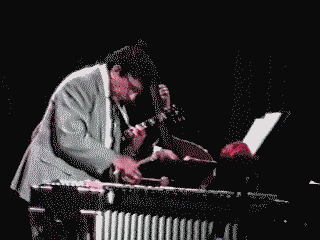 Ray Alexander
Ray Alexander played jazz for over 50
years, appearing with such luminaries as George Shearing, Claude
Thornhill, Stan Getz, Peggy Lee, Anita O'Day, Bill Evans, Charlie
Barnet, and a host of others.
Ray Alexander
Ray Alexander played jazz for over 50
years, appearing with such luminaries as George Shearing, Claude
Thornhill, Stan Getz, Peggy Lee, Anita O'Day, Bill Evans, Charlie
Barnet, and a host of others.
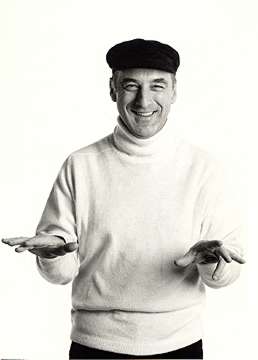 Victor
Feldman was a child prodigy who was a professional
from the age of seven and sat in on drums with
Glenn Miller's Army Air Force Band
in 1944 when he was ten. He was active in his native
England through the bebop years (mostly on drums),
debuting as a leader in 1948. By 1952, Feldman was
getting better-known for his vibes playing and he
recorded extensively during the 1950s. After touring
with
Woody Herman
(1956-1957), he decided to move to the U.S. in 1957,
where he worked at the Lighthouse with
Howard Rumsey.
Feldman recorded (on vibes and piano) for Mode,
Contemporary, and Riverside during 1957-1961, a period
in which he became a busy studio musician. Feldman was
with
Cannonball Adderley's Quintet
(mostly as a pianist) for six months in 1960-1961 and
recorded with
Miles Davis
in 1963 (who offered him a job with his new quintet and
recorded his original "Seven Steps to Heaven"), but
remained in L.A. and the studios. He cut jazz dates for
Choice, Concord, Palo Alto, and TBA and in the 1980s up
until his death he led a soulful crossover group (the
Generation Band) that often featured his son, Trevor
Feldman, on drums. ~ Scott Yanow, All Music Guide
Victor
Feldman was a child prodigy who was a professional
from the age of seven and sat in on drums with
Glenn Miller's Army Air Force Band
in 1944 when he was ten. He was active in his native
England through the bebop years (mostly on drums),
debuting as a leader in 1948. By 1952, Feldman was
getting better-known for his vibes playing and he
recorded extensively during the 1950s. After touring
with
Woody Herman
(1956-1957), he decided to move to the U.S. in 1957,
where he worked at the Lighthouse with
Howard Rumsey.
Feldman recorded (on vibes and piano) for Mode,
Contemporary, and Riverside during 1957-1961, a period
in which he became a busy studio musician. Feldman was
with
Cannonball Adderley's Quintet
(mostly as a pianist) for six months in 1960-1961 and
recorded with
Miles Davis
in 1963 (who offered him a job with his new quintet and
recorded his original "Seven Steps to Heaven"), but
remained in L.A. and the studios. He cut jazz dates for
Choice, Concord, Palo Alto, and TBA and in the 1980s up
until his death he led a soulful crossover group (the
Generation Band) that often featured his son, Trevor
Feldman, on drums. ~ Scott Yanow, All Music Guide
Guide to Solo Vibraphone - Lessons

Mark
Sherman
After
nearly 25 years of recording, writing, and
performing with Larry Coryell’s group and many
others, vibraphonist Mark Sherman a Yamaha
performing artist, and a Vic Firth artist has a
beautiful quintet featuring Joe Magnarelli on
trumpet, Allen Farnham on piano, Dean Johnson on
bass, and Tim Horner on drums. Sherman’s previous
recording “One Step Closer” featuring Joe Lovano was
recently in the top ten on the radio charts for 12
weeks in the United States. The most recent
recording “Family First” was the most spun CD in the
United States in it’s opening week on the charts.
Tied in with most of Sherman's live performances
(clubs, and festivals) is a 2 hour master-class on
language skills for improvisation, usually done at
the local music school or university music
department, and sponsored by Yamaha and Vic Firth
Co.” These master-classes have been extremely
successful at the high school and college level.
I've received countless emails from students telling
me how my system for learning the harmonic language
needed for playing jazz was the simplest and most
user friendly system they've come across, and that
it answered many of the confusing questions, and got
them improvising on chord changes very quickly.”
Mark Sherman's background, Juilliard education, and
working, performance and recording experience have
all contributed to a unique vision, which
incorporates elements of jazz and classical music.
Accomplished as a soloist (vibes/piano), ensemble
player, composer and educator, Sherman is in love
with music and re-harmonization of chords to explore
and give expression to his musical vision. The
Bronx-born and raised son of a star soprano who
performed with the Cleveland and Boston Symphony
Orchestras had 5 years of classical piano lessons
before he fell in love with jazz through Lester
Young, Charlie Parker and Coltrane LP's. He had been
playing drums for a while and practicing with
records, emulating Elvin Jones, when he heard that
Elvin was teaching at Frank Ippolito's Professional
Percussion Center. Mark sought him out as a teacher.
What he learned most from Elvin was a feeling of
“loose but intense swing” and how to “channel
spiritual energy into music.”
Sherman graduated from the High school of Music and Art and then went on to Juilliard where he had 5 solid years of percussion training with tympani master Saul Goodman. He played in symphonic situations led by Zubin Mehta, Sir George Solti, and Leonard Bernstein. At Juilliard he met another soul at home in both classical and jazz worlds Wynton Marsalis. They jammed together regularly and years later when Columbia Records' George Butler inquired about Mark, Wynton's endorsement helped pave the way for Sherman's record date A New Balance ( 1986). The first few years after Juilliard he made a living in the “pits” of long running Broadway shows. But more challenging work soon came his way, He found himself in playing situations with, Kenny Kirkland, Rodney Jones, the NY Philharmonic, the Joffrey ballet Orchestra, the American Symphony, the NY New Music Ensemble and many other groups. David Chesky wrote a concerto for vibes and orchestra especially for Sherman, which has been performed twice. Mark performed as featured soloist in Darius Milhaud's Concerto For Marimba and Orchestra at Merkin Hall. Sherman went on the road with singers Jackie and Roy, which led to his recording and working with Peggy Lee (6years). From her he had lessons in how to “turn a musical phrase” and “subtle time.” Working with the special musicians Lee surrounded herself with (Grady Tate, Mike Renzi, and Jay Leonhart, and Jon Chiodini) led to gigs with Mel Torme and recordings with other singers including Maureen McGovern, Liza Minelli, and Jon Hendricks; and he got more studio and work experience. He played on records by guitarists Joe Beck and Rodney Jones and also produced Jones' CD “The Unspoken Heart” for Minor Music in Germany.
Sherman began touring with R&B pioneer Ruth Brown just at the time when she was being re-appreciated as a jazz singer. But her singing of standards always calls for a heavy dose of blues feeling and blues changes. Mark was exposed to a lot of different blues forms and tempos. In accompanying her he gained a renewed awareness of the blues as the roots of all American popular music. He played vibes and piano on Brown's “Songs Of My Life” (Fantasy records) After recording for small labels, A New Balance (CBS) showcased his skills as a composer, vibraphonist, and pianist. In the last few years Mark has been performing with his group and doing master classes worldwide. Some of his music has been used regularly on TV shows. Mark has toured with guitarist Larry Coryell. He produced two of Coryell's CD’s, I'll Be Over You (CTI records).Hi Eddie, - Your site is one of a kind. Very Cool!! - All my best - Mark Sherman
The UK Exponents
 Roan
Kearsey-Lawson
has been described by the
likes of Don Rendell, Harry Beckett and Lee Gibson
as a fine percussionist. He has been quoted in the
press as the "Vibes Master". Not only considered by
some as one of the finest vibes players in the U.K.
he is also a well seasoned Kit player having backed
a huge list of jazz greats at various venues in the
South East and as a house musician at the 144Club in
Rochester and Maidstone, Kent. To name only a few he
has backed John Etheridge, Jean Toussaint, Tony
Kofi, and Alan Barnes on Kit, and performed with
among others Art Themen, Duncan Lamont, Duncan
Lamont Jr, Dave Cliff and Jimmy Hastings on Vibes.
Roan has performed live on BBC Radio, has played at
the Royal Albert Hall Ignite Concert Series at the
end of the London Jazz Festival, and at Octave8 Jazz
Club in Covent Garden, London. In 2007 Roan released
a debut album and is currently (2009) working on 2
compilations with serveral artists. Also known to
play the piano Roan even developed playing the drums
and keyboards at the same time (which was part of a
comedy show in London)! In addition to giging as a
jazz musician Roan is also the principal
percussionist for a non-residential professional
orchestra the City of Canterbury Sinfonia Orchestra,
he plays in other classical orchestras, performs for
theatre companies, has recently published his own
books (still working on more!) and with 3 degrees
after his name is the managing director of
KLMusicGroup, which includes a record label,
publishing label, jazz clubs, gig promotions and
private instrumental tuition.
Roan
Kearsey-Lawson
has been described by the
likes of Don Rendell, Harry Beckett and Lee Gibson
as a fine percussionist. He has been quoted in the
press as the "Vibes Master". Not only considered by
some as one of the finest vibes players in the U.K.
he is also a well seasoned Kit player having backed
a huge list of jazz greats at various venues in the
South East and as a house musician at the 144Club in
Rochester and Maidstone, Kent. To name only a few he
has backed John Etheridge, Jean Toussaint, Tony
Kofi, and Alan Barnes on Kit, and performed with
among others Art Themen, Duncan Lamont, Duncan
Lamont Jr, Dave Cliff and Jimmy Hastings on Vibes.
Roan has performed live on BBC Radio, has played at
the Royal Albert Hall Ignite Concert Series at the
end of the London Jazz Festival, and at Octave8 Jazz
Club in Covent Garden, London. In 2007 Roan released
a debut album and is currently (2009) working on 2
compilations with serveral artists. Also known to
play the piano Roan even developed playing the drums
and keyboards at the same time (which was part of a
comedy show in London)! In addition to giging as a
jazz musician Roan is also the principal
percussionist for a non-residential professional
orchestra the City of Canterbury Sinfonia Orchestra,
he plays in other classical orchestras, performs for
theatre companies, has recently published his own
books (still working on more!) and with 3 degrees
after his name is the managing director of
KLMusicGroup, which includes a record label,
publishing label, jazz clubs, gig promotions and
private instrumental tuition.
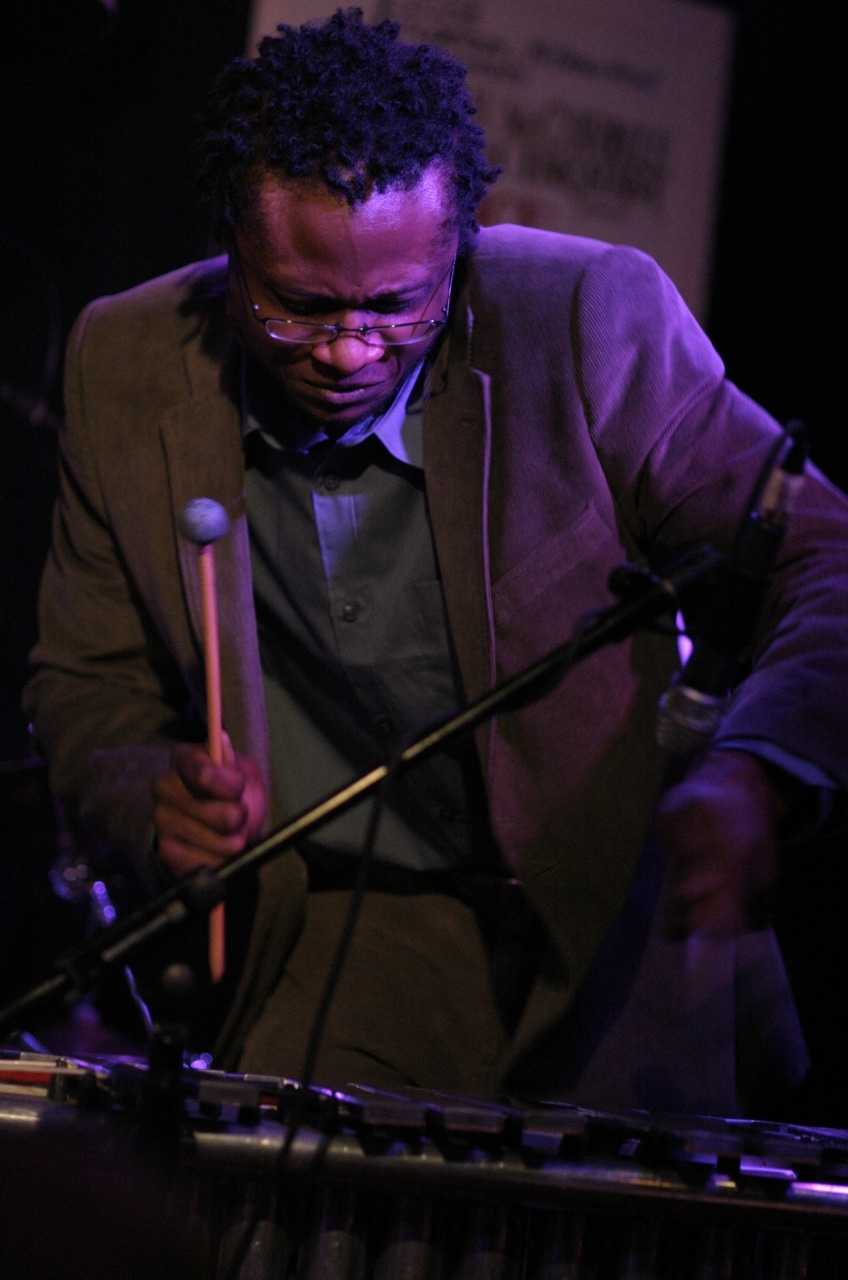 Corey
Mwamba is one of the new generation of
British jazz musicians. Corey and his
vibraphone are a regular sight in Derby’s pubs and
clubs, but that’s the just the tip of the iceberg.
At just 25, he’s already an extremely accomplished
musician having performed with jazz greats, composed
for a range of musical genres and has his own radio
show.
Corey first became interested in jazz when he
mistakenly tuned in to a piano concert whilst
studying
for
his GCSEs. He began composing music before he
could even play an instrument; he claims to be able
to whistle and hum at the same time!
It was only when he saw a picture of legendary
musician Orphy Robinson playing his vibraphone that
Corey knew he had found the instrument for him.
Corey
Mwamba is one of the new generation of
British jazz musicians. Corey and his
vibraphone are a regular sight in Derby’s pubs and
clubs, but that’s the just the tip of the iceberg.
At just 25, he’s already an extremely accomplished
musician having performed with jazz greats, composed
for a range of musical genres and has his own radio
show.
Corey first became interested in jazz when he
mistakenly tuned in to a piano concert whilst
studying
for
his GCSEs. He began composing music before he
could even play an instrument; he claims to be able
to whistle and hum at the same time!
It was only when he saw a picture of legendary
musician Orphy Robinson playing his vibraphone that
Corey knew he had found the instrument for him.
Corey is self-taught apart from five lessons he
received whilst at the college in Southampton.
Whilst typically humble about his ability, Corey’s
performances are fluid, funky and mesmerizing to
watch. He regularly joins jamming sessions in
Derby, plays alongside the decks of DJ Vuyani in
nightclubs and plays duos and improvisation sets
with percussionist Walt Shaw. Not to mention
various ensembles performing his compositions. His
repertoire goesand on! Dialectic, which has received
funding from East Midlands Arts, explores the
parallels between a conversation between strangers
and totally improvised music.
Conversations between strangers are edited and
remixed by Ben and replayed during the performance
whilst Corey and Walt improvise to the voices.
Corey and Walt are now running workshops based on
the project with under-privileged children in
Loughborough and Derby. They hope to help kids
communicate and resolve problems as well as having
fun with music. Although living in Derby,
Corey has expressed frustration at the lack of
opportunities for jazz musicians in the city.
"Most of the venues that have live music have a
reputation for playing rock or punk bands.
Whilst there are plenty of opportunities to play in
bars or clubs with a DJ, that’s just a small part of
what I do. There doesn’t seem to be any promoters
around who are willing to take a risk."
One venue that has provided a setting for the real
Corey Mwamba is The Voicebox -The venue, which
opened last year, only hosts acoustic music because
of its city location. The owner, Colin Miller,
explains: "We were conscious there was not a small,
cheap, arts-based venue in Derby with a good
acoustic for good amateur musicians and small
groups. We’ve had jazz, improvisation and
classical musicians using the venue including some
really unusual combinations; oboe and percussion,
harp and saxophone as well as Corey and Walt."
Corey’s aim is to give a personal edge to his music
whether it’s totally improvised or his delicately
constructed compositions. He expresses a
passion that’s contagious, whether he’s performing
or just talking about music
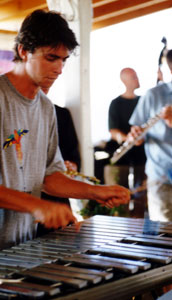
 Jim
Hart is the sensational new vibraphone star of the
London jazz scene.
Jim
Hart is the sensational new vibraphone star of the
London jazz scene.
Awesome multi-talented pianist, drummer and
vibraphone player Jim Hart began playing piano and drums at the age of
four. By the time he was eleven he was playing both
instruments in the Tamar youth jazz orchestra as
well as playing percussion in the Cornwall youth
wind orchestra and the C.Y.percussion ensemble. At
sixteen he went to study at Chetham's school of
music. During this time he was a percussion finalist
in the BBC young musician competition and won the
John Dankworth award for most promising musician in
the BBC big band competition. After Chetham's he
studied at the Guildhall and after leaving there he
became the drummer for NYJO and the vibes player
with Martin Drew's Jazz Couriers. As well as
studying with Dave Hassel and Steve Berry whilst at
Chetham's and the many teachers and visiting tutors
at the Guildhall Jim has had some in teaching in
workshop environments. He has been an assistant
tutor on Wavendon, has assisted Scott Stroman in
primary school workshops and did regular workshops
around the country with NYJO. Although it is not a
jazz project Jim is currently working for the
Guildhall's Connect project.
Awarded
“Best Newcomer” medal by the Worshipful Company of
Musicians in August in a competition at the Pizza
Express jazz club against others including talented
alto saxophonist Sam Mayne, he is best known to
audiences as a member of Martin Drew's New Jazz
Couriers.
Listen to Jim Hart
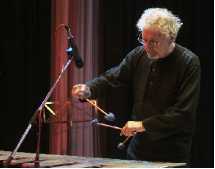
|
|
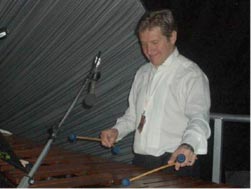 FRANK
RICOTTI
was voted Melody Maker’s Top Vibraphone player back
in his teens, since when he has remained constantly
in demand for his work on records, film scores,
jingles and TV shows and is the first choice
percussionist for many artists, valued for his
creative input. He has worked with many of this
country’s favourite jazz musicians having performed
at many clubs and festivals including the Montreux
Jazz Festival, and over the years has played
alongside Stan Tracey, John Taylor, Mike Gibbs,
Kenny Wheeler, Norma Winstone, Gordon Beck, John
Surman and Stan Sulzmann. Widely regarded as the
UK’s most recorded percussionist, his playing is
featured on numerous best selling albums, including
those by Robbie Williams, Tina Turner, Bjork,
Lighthouse Family, Elvis Costello, Joni Mitchell and
countless films, including Harry Potter, Shakespeare
in Love, Captain Corelli and The Beach. As a
versatile composer Frank’s crafted and distinctive
scores have enhanced many TV dramas, and in
particular his commissions in a jazz idiom have won
much acclaim. He has collaborated closely with Alan
Plater, writing the music for the acclaimed ‘The
Beiderbecke Trilogy’ for YTV, winning a BAFTA Award
for ‘Best Original Television Music’ for the
‘Beiderbecke Connection’
FRANK
RICOTTI
was voted Melody Maker’s Top Vibraphone player back
in his teens, since when he has remained constantly
in demand for his work on records, film scores,
jingles and TV shows and is the first choice
percussionist for many artists, valued for his
creative input. He has worked with many of this
country’s favourite jazz musicians having performed
at many clubs and festivals including the Montreux
Jazz Festival, and over the years has played
alongside Stan Tracey, John Taylor, Mike Gibbs,
Kenny Wheeler, Norma Winstone, Gordon Beck, John
Surman and Stan Sulzmann. Widely regarded as the
UK’s most recorded percussionist, his playing is
featured on numerous best selling albums, including
those by Robbie Williams, Tina Turner, Bjork,
Lighthouse Family, Elvis Costello, Joni Mitchell and
countless films, including Harry Potter, Shakespeare
in Love, Captain Corelli and The Beach. As a
versatile composer Frank’s crafted and distinctive
scores have enhanced many TV dramas, and in
particular his commissions in a jazz idiom have won
much acclaim. He has collaborated closely with Alan
Plater, writing the music for the acclaimed ‘The
Beiderbecke Trilogy’ for YTV, winning a BAFTA Award
for ‘Best Original Television Music’ for the
‘Beiderbecke Connection’
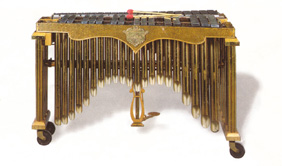
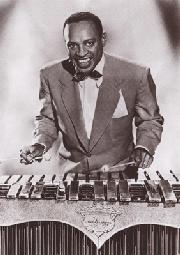
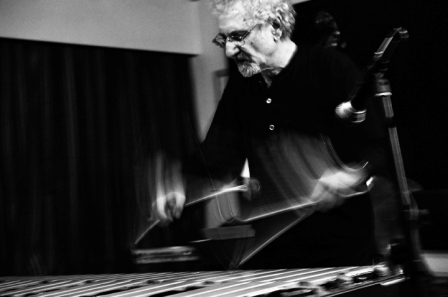

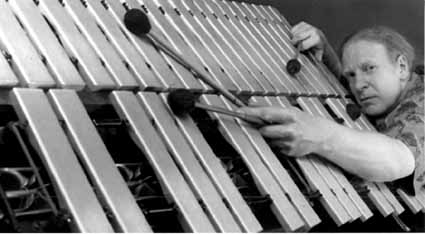

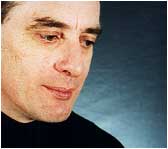
 Tom
O'Hare was born in Cork City Ireland. The great Vibes player Milt
Jackson who performed with the Modern Jazz Quartet was his first major
influence. Tom (who studied and qualified in Classical piano) developed
a great interest in the Classical Piano Repertoire and especially in the
music of Frederic Chopin. He is also a great admirer of the Bach
Preludes and Fugues, the keyboard sonatas of Mozart, Haydn and Beethoven
and the romantic piano compositions of Schumann, Mendelssohn and Brahms.
Tom
O'Hare was born in Cork City Ireland. The great Vibes player Milt
Jackson who performed with the Modern Jazz Quartet was his first major
influence. Tom (who studied and qualified in Classical piano) developed
a great interest in the Classical Piano Repertoire and especially in the
music of Frederic Chopin. He is also a great admirer of the Bach
Preludes and Fugues, the keyboard sonatas of Mozart, Haydn and Beethoven
and the romantic piano compositions of Schumann, Mendelssohn and Brahms.

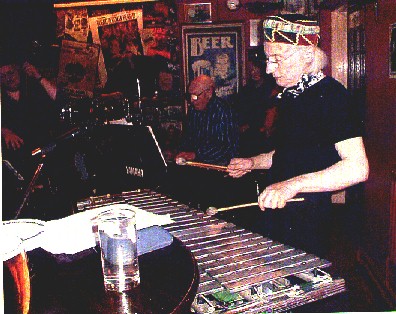
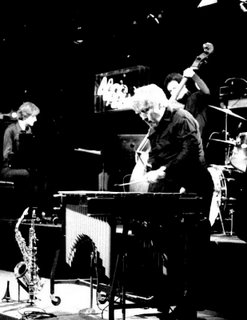

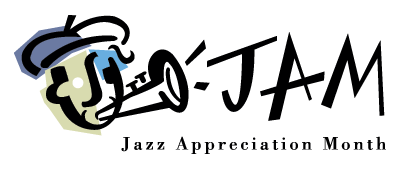 - is every month of your year
- is every month of your year